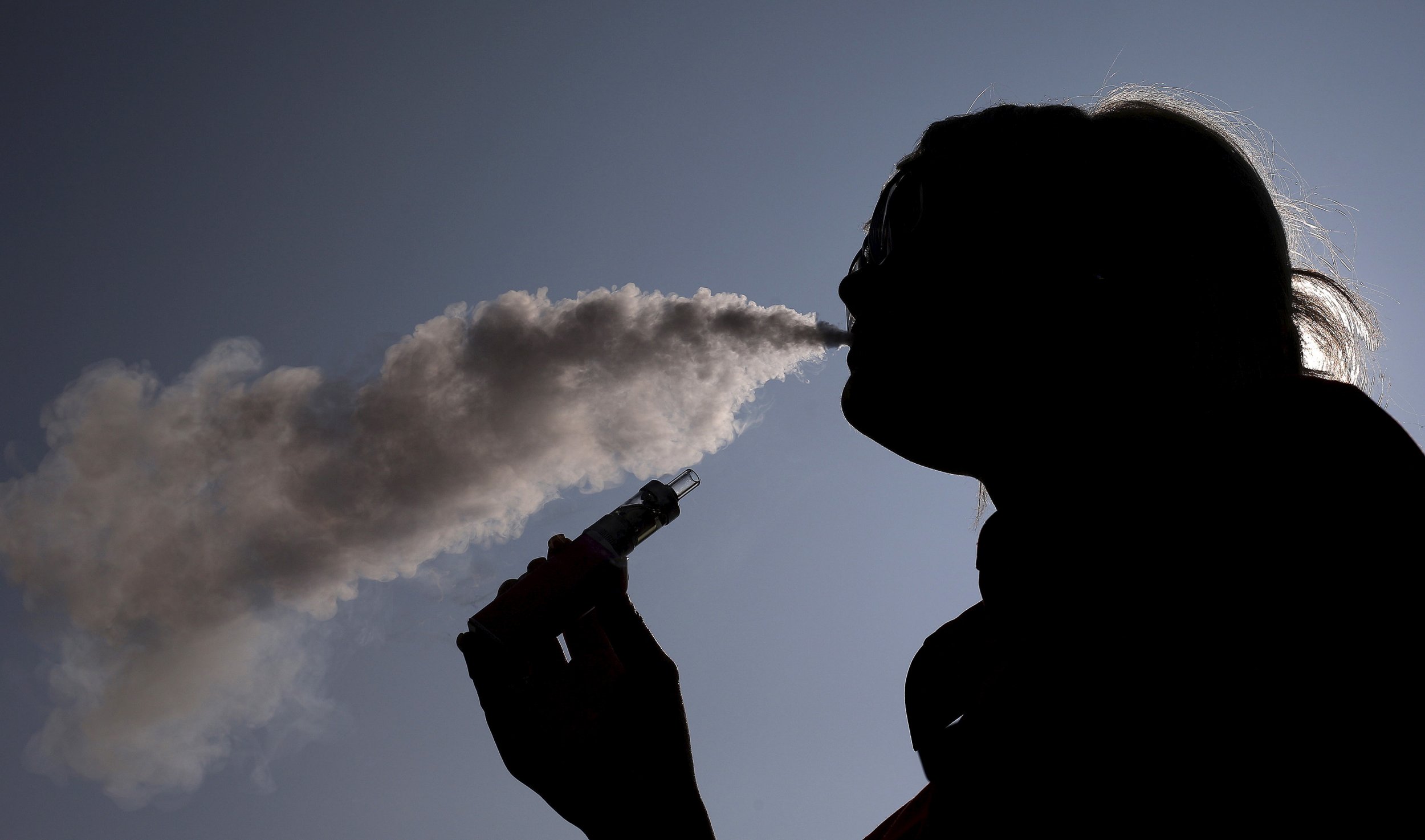
🎙️ Voice is AI-generated. Inconsistencies may occur.
Ever since their debut in 2003, the popularity of e-cigarettes has soared. This is, in part, because they're billed as safer and less addictive than regular cigarettes. Many smokers see vaping as a means to bring them one step closer to kicking the habit for good, despite the fact that a growing body of research indicates that e-cigarettes may be just as harmful as traditional tobacco.
A new study, published online this week in the journal Tobacco Control, is an effort to help clear the air. The study finds that e-cigarettes, as well as low-tar "light" cigarettes, are just as addictive and habit-forming due to a common additive known as pyrazine. This would seem to make sense since many smokers who use nicotine patches still relapse and fail to quit. Studies show the patch helps curb only short-term cravings, and smokers may pick up the habit again a few years later.
Pyrazine is added to make light cigarettes taste richer and smoother—more like full-flavored cigarettes—and provide a more satisfying vaping or smoking experience that is similar to nicotine. Nicotine hits the brain's reward center by triggering the release of dopamine, a neurotransmitter that is also involved in drug addiction and pain processing.
The cigarette industry developed low-tar cigarettes following World War II, when some of the first studies linking cigarettes to diseases like cancer were published. But low-tar cigarettes fell flat on the market because smokers didn't like the taste, which is why the industry looked for ways to bolster the smoking experience with additives.
For the recently published study, the researchers examined internal documents and scientific research about cigarette additives from the tobacco industry that become available in the late 1990s in lawsuits filed against Philip Morris and other cigarette manufacturers. The researchers found documents prepared by Philip Morris stating the company's plan to develop a low-tar cigarette with full flavor. Other documents showed that the company conducted research to identify chemicals that could enhance the smell and taste that were similar to those in full-strength cigarettes.
This research culminated in the release of MERIT, a "light" brand of cigarettes in the 1970s that contained three types of pyrazines, an additive cocktail the company came to call "Super Juice." Subsequent research that didn't involve nicotine has determined pyrazine increases dopamine production in the brain.
The authors point out that the Food and Drug Administration currently bans cigarette additives that have characterizing flavors such as sweet and sour. A tart cherry or caramel popcorn-flavored cigarette isn't allowed under the regulations. But the FDA hasn't regulated the use of flavors such as licorice, menthol, cocoa and vanilla, which were already available before the ban.
The paper suggests that regulatory officials need to make a clear distinction between chemicals added to give the product a certain distinctive taste and those used to create a "smoother" and "richer" sensory experience.
"Chemosensory effects such as perceived smoothing and coolness (tactile) are associated with decreased aversion to smoking from the harshness and irritation of initial exposure to nicotine among novice smokers," the researchers write in their study. "Similar effects have been described for menthol. These effects might be a factor in smokers switching to 'low-tar' brands as an alternative to quitting smoking, going beyond the cognitive perception of reduced disease risk, to the emotive, physical perception that the smoke is 'smoother' and thus less harmful."